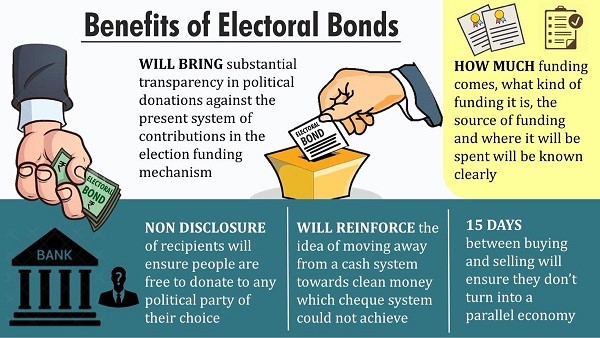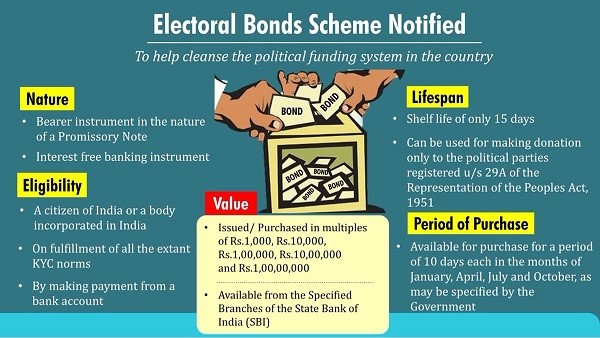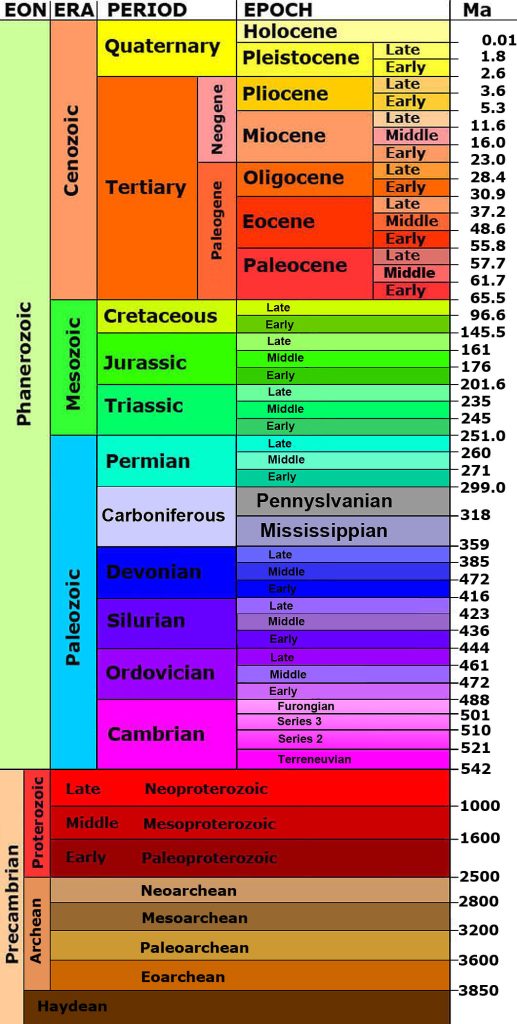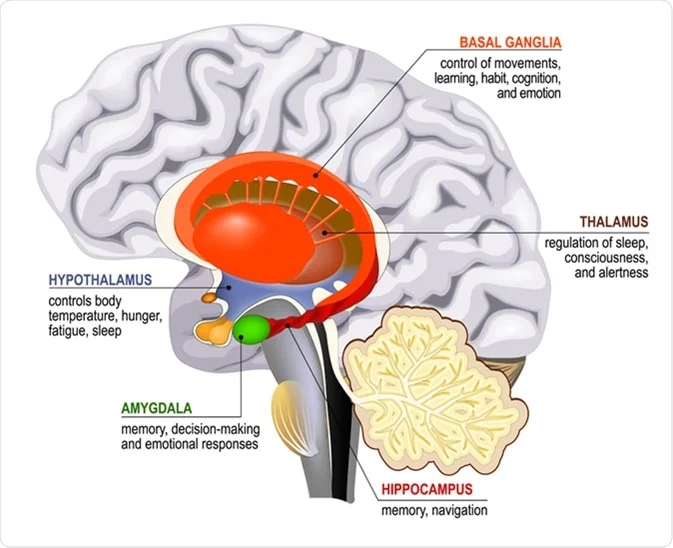CONTENTS
- Revitalization of Stepwells and Borewells: To Address Flooding and Groundwater Issues
- Electoral Bonds
- Anthropocene epoch
- Impact of welfare schemes on brain development
- Comprehensive and Progressive Agreement for Trans-Pacific Partnership
- Perseverance rover
- Waterlogging Crisis in Delhi Due to Rising Yamuna River Levels
- Duchenne’s Muscular Dystrophy
Revitalization of Stepwells and Borewells: To Address Flooding and Groundwater Issues
Context:
10 cities across the country are getting ready to revive defunct borewells, neglected heritage stepwells and other shallow aquifers in a pilot project to recharge the groundwater as well as mitigate flooding. The pilot project will be executed under the Atal Mission for Rejuvenation and Urban Transformation (AMRUT) 2.0.
Relevance:
GS II: Government policies and Interventions
Dimensions of the Article:
- Key Highlights of the Pilot Projects
- AMRUT – Atal Mission for Rejuvenation and Urban Transformation
- AMRUT 2.0 – Second Phase Objectives
Key Highlights of the Pilot Projects
Cities Covered:
- The pilot projects are being implemented in 10 cities across India, including Jaipur, Gwalior, Dhanbad, Kolkata, Rajkot, Thane, Pune, Hyderabad, Bengaluru, and Chennai.
- These cities were selected based on their historical dependence on shallow aquifer systems and the interest of local urban bodies in participating in the project.
Technical Partners:
- The National Institute of Urban Affairs (NIUA), ACWADAM (Advanced Center for Water Resources Development and Management), and Biome Environmental Solutions are the technical partners for the project.
Objective:
- The pilot projects aim to recharge shallow aquifers, defunct borewells, and neglected stepwells to replenish groundwater resources and mitigate flooding in urban areas.
Advantages of Shallow Aquifers:
- Shallow aquifers, ranging from 3 to 5 meters in depth, can be recharged relatively quickly and with less energy compared to deeper aquifers.
- Once recharged, the water from these aquifers can be used by local communities, including informal settlements that rely on shallow aquifers for water supply.
Need for the Project:
- While Indian cities primarily rely on surface water supply, approximately 40% of the water supply comes from groundwater.
- Groundwater levels are depleting rapidly, necessitating the need for recharge.
- India is the largest global user of groundwater, as highlighted in the United Nations World Water Development Report 2022.
Addressing Water Scarcity and Flooding:
- By recharging groundwater, these pilot projects aim to tackle both water scarcity and flooding issues in urban areas.
- Recharging groundwater can help maintain a sustainable water supply and reduce the burden on surface water sources.
AMRUT – Atal Mission for Rejuvenation and Urban Transformation
Mission Objectives:
- Provide basic civic amenities and improve the quality of life, especially for the poor and disadvantaged.
- Ensure access to tap water supply and sewerage connection for every household.
- Develop green spaces and well-maintained parks to increase the amenity value of cities.
- Reduce pollution by promoting public transport and non-motorized transportation options like walking and cycling.
Coverage:
- The mission covers 500 cities, including all cities and towns with a population of over one lakh and notified Municipalities.
Achievements of AMRUT:
- Added 1.34 crore household water tap connections and 102 lakh sewer connections, benefiting over 4 crore people, ensuring water security.
AMRUT 2.0 – Second Phase Objectives:
- Improve sewage and septic management.
- Make cities water safe by ensuring no sewage drains into rivers.
- Focus on enhancing sewerage and septic management to make all Indian cities water secure.
Targets of AMRUT 2.0:
- Provide 100% coverage of water supply to all households in around 4,700 urban local bodies, providing 2.68 crore tap connections.
- Achieve 100% coverage of sewerage and septage in 500 AMRUT cities, providing around 2.64 crore sewer or septage connections.
Principles and Initiatives of AMRUT 2.0:
- Adoption of circular economy principles.
- Promotion of conservation and rejuvenation of surface and groundwater bodies.
- Data-led governance in water management.
- Technology Sub-Mission to leverage global technologies and skills.
- Conducting “Pey Jal Survekshan” to promote competition among cities.
Expansion and Impact:
- AMRUT 2.0 extends coverage from 500 cities in the first phase to 4,700 cities and towns.
- It is expected to benefit more than 10.5 crore people in urban areas.
-Source: Indian Express
Electoral Bonds
Context:
A recent report by the Association of Democratic Reforms (ADR) an Indian Non-governmental Organization (NGO) established in 1999 situated in New Delhi sheds light on the significant role played by Electoral Bonds as the primary source of donations for political parties in India.
Relevance:
GS II: Polity and Governance
Dimensions of the Article:
- Key Highlights of the ADR Report
- What are Electoral Bonds?
- Why have they attracted criticism?
Key Highlights of the ADR Report
The report analyzed various sources of donations received by political parties, including Electoral Bonds, corporate donations, contributions from MPs/MLAs, meetings, morchas, and collection by party units.
Electoral Bond Donations
- The highest donations from Electoral Bonds, amounting to ₹3,438.8237 crore, were received in 2019-20, the year of the general elections.
- In 2021-22, during which 11 Assembly elections took place, Electoral Bond donations worth ₹2,664.2725 crore were recorded.
Distribution of Donations
- Out of the total donations of ₹16,437.635 crore received by the 31 political parties analyzed, 55.90% came from Electoral Bonds, 28.07% from the corporate sector, and 16.03% from other sources.
National Parties
- National parties witnessed a significant surge in Electoral Bond donations, experiencing a 743% increase between FY 2017-18 and FY 2021-22.
- Corporate donations to national parties increased by 48% during the same period.
Regional Parties
- Regional parties also received a substantial proportion of their donations from Electoral Bonds.
Donations by Specific Parties
- The BJP, as the ruling party, received the highest donations among national political parties. More than 52% of the BJP’s total donations came from Electoral Bonds, totaling ₹5,271.9751 crore.
- The Congress secured the second-highest Electoral Bond donations, with ₹952.2955 crore, which accounted for 61.54% of its total donations.
- The Trinamool Congress received ₹767.8876 crore through Electoral Bonds, representing 93.27% of its total donations.
What are Electoral Bonds?
- An electoral bond is like a promissory note that can be bought by any Indian citizen or company incorporated in India from select branches of State Bank of India.
- The citizen or corporate can then donate the same to any eligible political party of his/her choice.
- The bonds are similar to bank notes that are payable to the bearer on demand and are free of interest.
- An individual or party will be allowed to purchase these bonds digitally or through cheque.


Why have they attracted criticism?
- The central criticism of the electoral bonds scheme is that it does the exact opposite of what it was meant to do: bring transparency to election funding.
- For example, critics argue that the anonymity of electoral bonds is only for the broader public and opposition parties.
- The fact that such bonds are sold via a government-owned bank (SBI) leaves the door open for the government to know exactly who is funding its opponents.
- This, in turn, allows the possibility for the government of the day to either extort money, especially from the big companies, or victimise them for not funding the ruling party — either way providing an unfair advantage to the party in power.
- Further, one of the arguments for introducing electoral bonds was to allow common people to easily fund political parties of their choice but more than 90% of the bonds have been of the highest denomination (Rs 1 crore).
- Moreover, before the electoral bonds scheme was announced, there was a cap on how much a company could donate to a political party: 7.5 per cent of the average net profits of a company in the preceding three years. However, the government amended the Companies Act to remove this limit, opening the doors to unlimited funding by corporate India, critics argue.
-Source: The Hindu
Anthropocene Epoch
Context:
Geologists recently said sediments at Crawford Lake in Canada’s Ontario have provided evidence of the beginning of the Anthropocene epoch.
Relevance:
GS I: Geography
Dimensions of the Article:
- What is the Anthropocene?
- What is the Holocene Epoch?
- Geological Time Scale
What is the Anthropocene?
- Coined in 2000, the Anthropocene refers to the present geological time interval characterized by significant human impact on Earth’s ecosystem.
- It emerged with the onset of the Industrial Revolution and encompasses various phenomena such as global warming, sea-level rise, and environmental degradation.
What is the Holocene Epoch?
- The Holocene is the current geological epoch that began approximately 11,700 years ago after the last major ice age.
- It is marked by a relatively stable and warm climate, as well as the development of human civilization.
- The Holocene follows the Pleistocene epoch and is part of the Quaternary period.
Geological Time Scale:
- Geologists divide Earth’s 4.6-billion-year history into slices of time: Eon, Era, Period, Epoch, and Age.
- Each division corresponds to significant events like continental shifts, climate changes, and the emergence of different life forms.

-Source: Indian Express
Impact of Welfare Schemes on Brain Development
Context:
Recently, a study published in the journal Nature has shed light on the impact of welfare schemes on brain development, particularly in children from low-income families.
Relevance:
GS III: Science and Technology
Dimensions of the Article:
- Key Highlights of the Study
- Future Implications and Limitations
Key Highlights of the Study:
- Previous research consistently showed that growing up in low-income families can negatively affect brain development and cognitive abilities.
- Studies in 2015 found that children from low-income families had lower cortical volume and performed poorly in academic tests.
- Children from low-income families were at higher risk of having a smaller hippocampus, a critical structure for learning and memory.
The Role of Anti-Poverty Policies:
- Generous anti-poverty policies were found to significantly reduce the risk of a smaller hippocampus in children from low-income families.
- Family socioeconomic status positively correlated with the size of the hippocampus.
- The study identified a three-way interaction between family income, cost of living, and cash assistance programs in predicting hippocampal volume.
- In high-cost-of-living states with generous cash benefits, low-income households had hippocampal volumes 34% larger than those in low-income households in states with higher cost of living and lower cash benefits.

Impact on Brain Development:
- Access to more financial resources through welfare schemes can help mitigate chronic stressors associated with low income, which may influence hippocampal development.
- Anti-poverty policies can reduce stress levels and enable families to make decisions that lead to decreased stress, such as working fewer hours.
Future Implications and Limitations
Implications for the Future
- The researchers aim to investigate the impact of policy changes on the mental health and brain development of participants over time.
- Monitoring the long-term effects of policy changes can offer valuable insights into the effectiveness of anti-poverty measures.
- Investments in social safety net programs are crucial for addressing socioeconomic disparities in neurodevelopment and can potentially alleviate the costs associated with mental health, education, and economic challenges stemming from socioeconomic inequalities.
Limitations to Consider:
- The study focused on a specific period and may not capture the full range of policy changes and their effects on brain development.
- The research primarily examined the hippocampus and cortical volume, and other brain regions and cognitive abilities may also be influenced by socioeconomic factors.
- The study does not establish causality, as other factors beyond anti-poverty policies may contribute to brain development in low-income families.
- The findings may not generalize to all populations, as the study focused on specific groups and regions.
-Source: The Hindu
Comprehensive and Progressive Agreement for Trans-Pacific Partnership
Context:
The UK has formally agreed to become the first European country to join the Comprehensive and Progressive Agreement for Trans-Pacific Partnership (CPTPP).
Relevance:
GS II: International Relations
Dimensions of the Article:
- What is CPTPP?
- How much does Britain trade with CPTPP?
- Benefits of Rules of Origin under CPTPP for Exporters
- Sectoral Impact and Geopolitical Factors of UK Joining CPTPP
What is CPTPP?
- CPTPP is a free trade agreement (FTA) that was agreed in 2018 between 11 countries – Australia, Brunei, Canada, Chile, Japan, Malaysia, Mexico, New Zealand, Peru, Singapore and Vietnam.
- Britain will become the 12th member, and the first to join since the partnership since its inception.
- Prime Minister office said that CPTPP countries will have a combined GDP of 11 trillion pounds ($13.6 trillion) once Britain joins, or 15% of global GDP.
- It does not have a single market for goods or services, and so regulatory harmonisation is not required, unlike the European Union, whose trading orbit Britain left at the end of 2020.
How much does Britain trade with CPTPP?
- Britain says that exports to CPTPP countries were worth 60.5 billion pounds in the twelve months to end-Sept. 2022.
- Membership of the grouping will add another 1.8 billion pounds each year in the long run, and possibly more if other countries join.
- But in an impact assessment of the deal when negotiations started in 2021, Britain said the agreement is estimated to deliver an increase of just 0.08% to GDP over the long term.
Benefits of Rules of Origin under CPTPP for Exporters
The Rules of Origin (RoO) under the Comprehensive and Progressive Agreement for Trans-Pacific Partnership (CPTPP) can provide benefits for exporters. Here are the key points:
- Preferential Tariffs: Exporters can benefit from preferential tariffs by demonstrating that their product is made up of a sufficient proportion of “locally” sourced parts.
- RoO under FTAs: Even when trading with countries where there is a bilateral Free Trade Agreement (FTA), exporters can benefit from CPTPP membership.
- EU Inputs Count as “Local”: RoO under post-Brexit FTAs with Japan, Mexico, and Canada allow exporters to count inputs from the European Union (EU) as “local.”
- Inputs from CPTPP Members: Under CPTPP, inputs from other CPTPP members can be considered local, giving exporters more options.
- Practical Benefit: The practical benefit for UK exporters is optionality. They can choose between counting EU inputs or CPTPP inputs as “local,” depending on which option is more beneficial.
Sectoral Impact and Geopolitical Factors of UK Joining CPTPP
The UK’s accession to the Comprehensive and Progressive Agreement for Trans-Pacific Partnership (CPTPP) has sectoral impact and geopolitical factors. Here are the key points:
Sectoral Impact:
- Beef Quota: The UK agreed to a quota on beef imports but did not agree to lower food standards, including the ban on hormone-treated beef.
- Tariff Reductions: Tariffs on palm oil from Malaysia will be liberalized, and the UK also agreed to tariff reductions on bananas, rice, and crab sticks following requests from Peru, Vietnam, and Singapore respectively.
- Zero Tariffs: 99% of UK exports to CPTPP would be eligible for zero tariffs, including cheese, cars, chocolate, machinery, gin, and whisky.
- Whisky Tariff: The phased elimination of Malaysia’s 165% tariff on whisky was welcomed by the Chief Executive of the Scottish Whisky Association, who sees the UK’s accession to CPTPP as opening up new opportunities for Scotch Whisky and other UK products in key markets in the region.
Geopolitical Factors:
- Small Economic Gain: While the long-term economic benefits for the UK are modest, the country has other reasons for joining the bloc.
- Geopolitical Strategy Gain: According to Minako Morita-Jaeger, a policy research fellow at the UK Trade Policy Observatory, the UK’s accession to CPTPP is a “big geopolitical strategy gain with a small economic gain.”
- China’s Application: China has applied to join CPTPP, and the UK’s pivot towards the Indo-Pacific, where it highlights China as an “epoch-defining challenge,” could enable the country to enhance strategic ties with like-minded countries to protect a free and open Indo-Pacific region.
-Source: Indian Express
Perseverance Rover
Context:
Recently, the United States National Aeronautics and Space Administration’s (NASA) Perseverance rover has discovered evidence of organic compounds in a Martian crater.
Relevance:
GS III: Science and Technology
Dimensions of the Article:
- Key Findings
- Perseverance Rover
Key Findings:
- Mars has a more complex organic geochemical cycle than previously believed, indicating the presence of multiple reservoirs of potential organic molecules on the planet.
- Water appears to have played a significant role in the diverse range of organic matter found on Mars.
- The Jezero Crater, where the rover landed, shows a high potential for past habitability due to its variety of minerals, including carbonates, clays, and sulphates.
- The minerals present in the Jezero Crater could have preserved organic compounds and potentially traces of prehistoric life.
- The Scanning Habitable Environments with Raman and Luminescence for Organics and Chemicals (SHERLOC) instrument was used to map the distribution of organic molecules and minerals on rock surfaces.
Perseverance Rover:
- The Perseverance rover is a robotic explorer sent to Mars as part of NASA’s Mars 2020 Mission.
- Its main objective is to search for signs of ancient life and collect samples of rock and regolith for potential return to Earth.
- The rover will collect samples, seal them in tubes, and leave them on Mars’ surface for future retrieval.
- It was launched on July 30, 2020, from Cape Canaveral, Florida.
- The rover successfully landed on the surface of Mars’ Jezero Crater on February 18, 2021.
- It is approximately the size of a car and weighs about 1,025 kilograms with all instruments onboard.
- The rover is powered by a Multi-Mission Radioisotope Thermoelectric Generator (MMRTG), which converts heat from the radioactive decay of plutonium into electricity.
-Source: Indian Express
Waterlogging Crisis in Delhi Due to Rising Yamuna River Levels
Context:
Delhi is currently experiencing a severe waterlogging crisis due to the rising water levels of the Yamuna River. The water level has surged to 208.13 meters, marking the highest recorded level since 1963.
Relevance:
GS III: Environment and Ecology
Dimensions of the Article:
- Cause and Impact of Increasing Water Level of Yamuna
- Yamuna River
Cause and Impact of Increasing Water Level of Yamuna
Cause:
- Heavy rainfall in upstream states such as Himachal Pradesh, Uttarakhand, Haryana, and Punjab.
- Release of a substantial amount of water from the Hathnikund barrage in Haryana.
Impact:
- Flooding in low-lying areas of Delhi, affecting a significant number of people.
- Disruption of transportation in the affected areas.
- Water supply in Delhi impacted due to closure of water treatment plants.
- Delhi government implementing a 25% cut in water supply.
Yamuna River
- The Yamuna River is a major tributary of the Ganges in Northern India.
- It flows through Uttarakhand, Himachal Pradesh, Haryana, Delhi, and Uttar Pradesh.
- The Yamuna-Ganga Plain, through which the river flows, is one of the world’s largest alluvial plains.
- It originates from the Yamunotri Glacier in the lower Himalayan ranges.
Important Dam and Tributaries:
- Lakhwar-Vyasi Dam in Uttarakhand and Tajewala Barrage Dam in Haryana are significant structures on the river.
- Important tributaries of the Yamuna include Chambal, Sindh, Betwa, and Ken.
Government Initiatives:
- Yamuna Action Plan: Implemented to address pollution and restore the ecological health of the river.
- Delhi Government’s Six-Point Action Plan: Aims to clean the Yamuna by February 2025 through measures such as sewage treatment plant construction, riverfront development, and interception and diversion of untreated sewage.
-Source: The Hindu
Duchenne’s Muscular Dystrophy
Context:
A collaborative effort between doctors in Tamil Nadu and scientists in Japan has led to the development of a disease-modifying treatment for Duchenne Muscular Dystrophy (DMD). The treatment involves the use of a food additive called beta-glucan, which is produced by a strain of yeast called Aureobasidium pullulans, specifically the N-163 strain. This breakthrough offers hope for individuals suffering from DMD.

Relevance:
GS III: Science and Technology
About Duchenne’s Muscular Dystrophy:
- Duchenne’s Muscular Dystrophy (DMD) is a rare genetic disorder.
- It was first described by the French neurologist Guillaume Benjamin Amand Duchenne in 1860.
- DMD is characterized by progressive muscle degeneration and weakness caused by mutations in the dystrophin gene, which leads to the absence or deficiency of the dystrophin protein.
- It primarily affects males, while females are typically carriers due to the gene being located on the X-chromosome.
- Symptoms typically appear in early childhood, with muscle weakness starting in the proximal muscles and later progressing to the distal limb muscles.
- Common symptoms include difficulty in walking, running, and jumping, calf muscle enlargement, a waddling gait, and lumbar lordosis.
- As the disease progresses, it affects the heart and respiratory muscles.
- Current treatments for DMD include gene therapy, exon skipping, stop codon read-through, and gene repair approaches.
-Source: The Hindu



